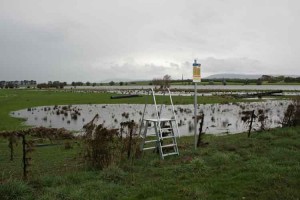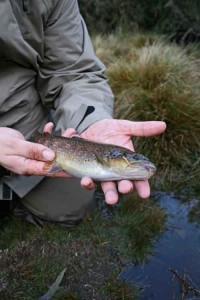The 09/10 Tasmanian trout fishing season is well and truly underway, with huge rainfalls and flood-fishing in the northern midlands being a major highlight. Winter rainfalls in Northern Tasmania have broken various records, with a record wet in July, and above average falls already landing during August. The result has been flood fishing opportunities never experienced by many; the type of fly fishing that David Scholes made famous, but the type of fly fishing that’s only been a rarity over the past five or more years of drought. Hitting the flooded margins at the right time can be a hit and miss affair, but worth the effort.
As I type, there are flood warnings current for the Macquarie, South Esk, North Esk and Meander Rivers. As these rivers again breach their banks, trout will scoot over the edge and on to the paddocks, where they’ll forage for worms and beetles. Hitting the rivers just as they break their banks and cover fresh ground is the key. The ideal backwaters and flooded margins will have little or no flow. Water that is too high, or high for too long (three or more days) are very much less than ideal. Tonight, the Lower Macquarie and the South Esk around Longford should be peaking – this will be a good time to have a look. The Meander is an example of a river that’s too high (too much water between the fish), while the North Esk is an example of a river that’s dropping – again less than ideal.
The results of the floods over the past three weeks have been trout, grown fat on a fresh diet of drowned terrestrials. RiverFly guide Patrick Horan has had evenings of a dozen fish or more on the margins of the South Esk, while RiverFly’s first guest of the season, Mischa, beat uber-flood conditions yesterday to land three fat creek fish among flooded headwaters—all were polaroided, with two taking an earthworm imitation I pinched borrowed from Pat Horan’s fly box a few days before.


